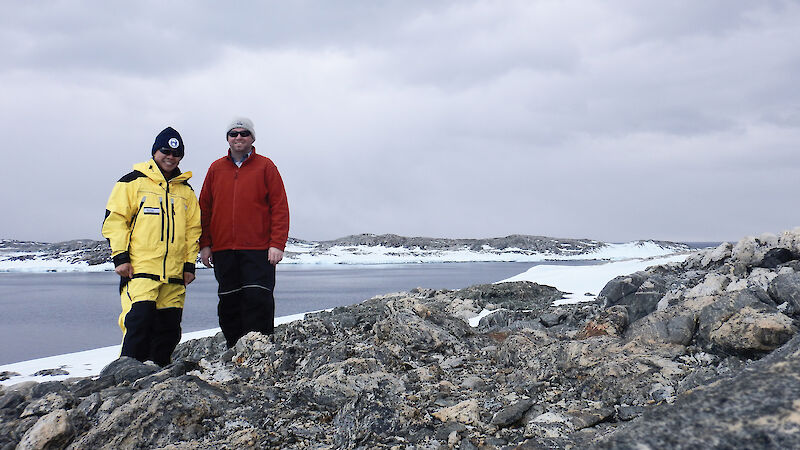Training on the coldest, driest and windiest continent on earth may seem like a formidable challenge. But for Felix Ho, 33, a placement with the Australian Antarctic Division was a dream opportunity.
A paramedic turned medical student, Mr Ho was interested in pursuing a career as a doctor in rural and remote health. When he applied for the John Flynn Placement Program (JFPP) in 2012, which is managed by Australian College of Rural and Remote Medicine, the Antarctic Division was a brand new offering.
‘I was so lucky to be one of the first ones to go,’ he said.
Preparation is intense to brace students for the arduous conditions. Before heading off, he was required to complete two placements at the Antarctic Division’s headquarters in Hobart and get medical clearance (Australian Antarctic Magazine 24: 30–31, 2013).
Mr Ho finally landed in Antarctica last summer, and his placement was split between two settings. The first was Casey station, the largest Australian base in Antarctica and which houses more than 100 people. Then he boarded the Aurora Australis icebreaker to treat about 50 people on board, including research scientists and crew, while crossing the iceberg-studded waters.
Mr Ho said working in Antarctica, a ‘one-doctor environment’, was particularly challenging for his supervisor Dr Grant Jasiunas, who had a variety of responsibilities not usually asked of General Practitioners.
‘I was amazed by his ability to deal with so many things,’ Mr Ho said.
‘You’re expected to do everything yourself, from treating dental problems to doing your own imaging.’
And while the environmental conditions were extreme, medical conditions were surprisingly mild. Mr Ho encountered no major illnesses or accidents, and no trauma. There were the ‘usual coughs and colds and quite a few dental problems,’ he said.
Of more significance was that the isolated conditions and tight-knit community meant people frequently reached out for emotional and mental health support.
‘The real reasons people came to see us were mostly psychological,’ Mr Ho said.
‘People wanted to chat and touch base with the doctor.’
The typical rounds lasted a whole day, as Mr Ho and Dr Jasiunas had a coffee or lunch with different people, making sure to touch base with all on-board.
‘The real consultation happened in the community,’ Mr Ho said.
‘You’re expected to spend a lot of time with people and build a rapport with them. There was a lot of camaraderie and peer support.’
With plenty of remote experience under his belt, Mr Ho has returned to Darwin and is gearing up for his final studies in medicine at Flinders University, as part of its Northern Territory Medical Program.
Meanwhile, his interest in rural and remote health remains.
‘Hopefully, I could head back down to Antarctica with a few more years of experience following medical school,’ he said, adding that he’s keeping his mind open about general practice.
‘The opportunities are quite exciting and I’m not ruling it out.’
The JFPP was established in 1997 and selects about 300 students each year for placement. Participants work closely with a rural doctor in a wide variety of health settings and experience one-on-one mentoring.
Other rural and remote placement communities include Christmas Island and the Pilbara.
Sheshtyn Paola
This story was originally published in the 28 August 2015 issue of Medical Observer.

